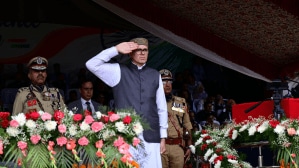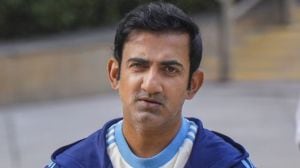Stay updated with the latest - Click here to follow us on Instagram
State improves literacy rate,sex ratio lower than national average
Over the last 10 years,Maharashtra has improved its literacy rate and sex ratio though the child sex ratio has taken a steep fall during the same period,pointing a finger at disappearing girls in the state.
Over the last 10 years,Maharashtra has improved its literacy rate and sex ratio though the child sex ratio has taken a steep fall during the same period,pointing a finger at disappearing girls in the state. The population growth rate has reduced from 22.73 per cent to 15.99 per cent over the decade but the state is the second most populated in the country.
Between 2001 and 2011,the literacy rate increased from 76.88 to 82.91 in the state,much better than the national literacy rate of 74.04 per cent. Maharashtra has the second highest literacy rate in the six large states,with 89.82 percent literacy rate among men and 75.48 per cent among women. Mumbai’s suburbs have the highest literacy rate,while Gadchiroli with 70.55 per cent illiterates and Nandurbar with 63.04 per cent make the bottom rung.
Sex ratio has improved slightly from 922 to 925 women per 1,000 men between 2001 and 2011,though still lower than the national ratio of 940 women per 1,000 men. The lowest sex ratio in the state is in Mumbai city–838 women per 1,000 men followed by 857 in Mumbai suburbs and 880 in Thane.
Pune,Beed,Aurangabad,Osmanabad,Jalgaon and Latur have sex ratios less than the state average. However,for the first time since 1981,a higher growth rate of women over men has been reported in this census,leading to the improvement in the overall sex ratio.
The alarming figure and one of most concern for the state is the significant drop in the sex child ratio since 1991 (946 women per 1,000). In 2011,the child sex ratio (0-6 years) has dropped to 883 women per 1,000 men from 913 women per 1,000 men in 2001.
“This is the most worrying factor for Maharashtra possibly because of selective abortions. The sex ratio in the state has increased although the child sex ratio has reduced,an indication towards the migration in the state. But we will not be able to say this conclusively till a final analysis of data is out,” said Ranjit Singh Deol,Director,Census operations,Maharashtra.
In another boost to the state,the population growth rate in the state has reduced in the last decade from 22.73 per cent in 2001 to 15.99 per cent in 2011. This is lower than the national growth rate of 17.64 per cent. For the first time since 1921,Ratnagiri and Sindhudurg have registered negative growth rates.
Maharashtra has become the second most populated state in the country as per the provisional census 2011 data released this week. The overall population in the state has increased from 9.68 crore to 11.23 crore during the last decade,an increase of over 1.54 crore.
Almost 10 per cent of the state’s population lives in Thane district alone. 1.10 crore people live in Thane district. Pune with 94.26 lakh persons makes up for 8.4 percent of entire population followed by Mumbai suburbs with 93.32 lakh persons (8.3 percent) In 2001,Mumbai (sub-urban) was on the top with 8.9 percent share in the total state’s population.
Highest population growth is in Thane district (35.94 percent) followed by 30.3 percent in Pune,27.3 percent in Aurangabad and 25.5 percent in Nandurbar.
On an average,there are 365 persons living in one sq km area in the state in 2011 as compared to 315 in 2001. The national average is 382 persons per km. However,this figure increases to over 20,000 in urban pockets of Mumbai. In Thane the density is 1,157 whereas Pune (603) and Kolhapur (504) are the other districts with a density more than 500.
The census was conducted by 2.17 lakh enumerators across the state in two phases. Provisional district-wise data was released on Friday and the final data after analysis will be released in mid-2012.







